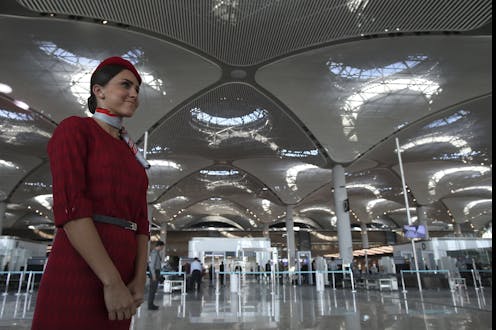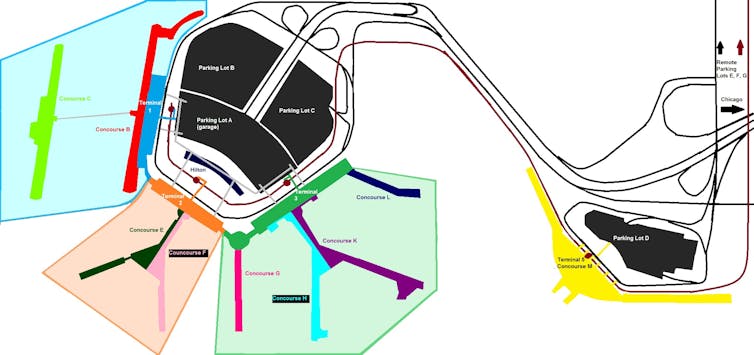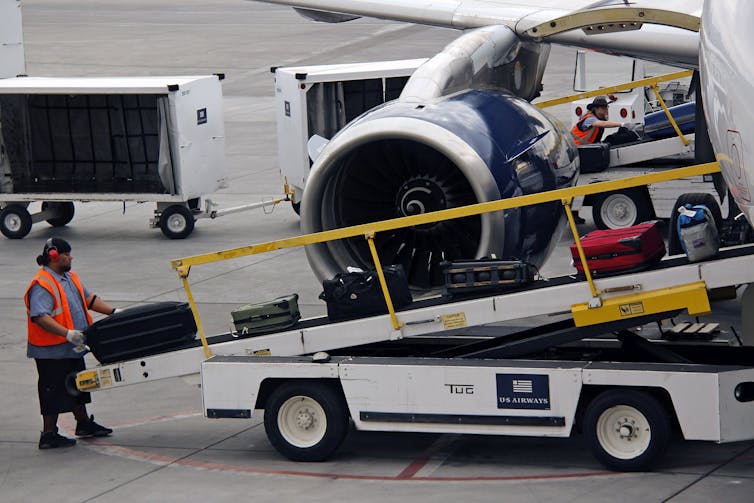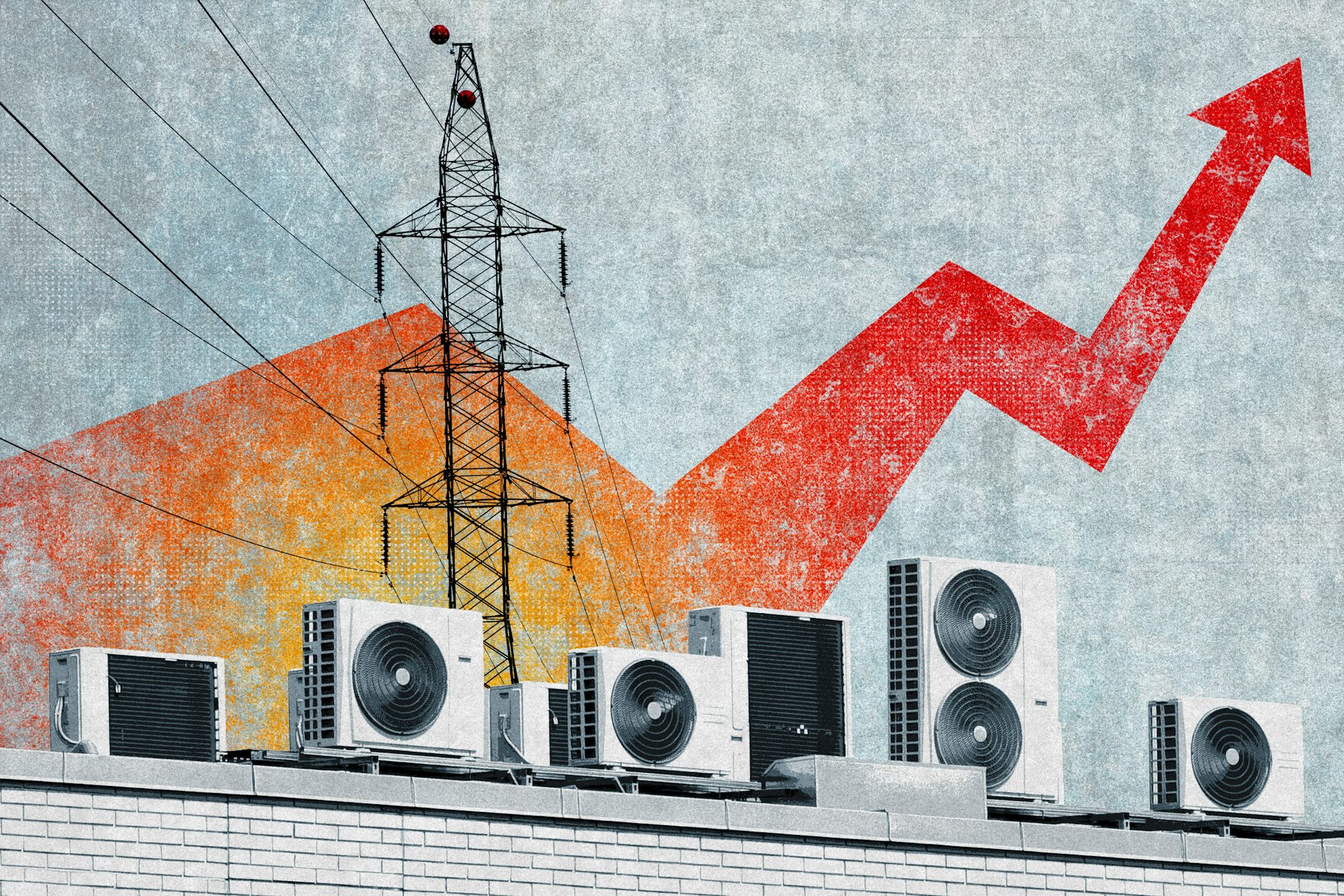In 'airports of the future,' everything new is old again
Big lines and long distances to walk have plagued airports since the dawn of the jet age. New designs and technologies haven't helped much, even if they're visually impressive.

As massive new airports open across Asia and the Middle East, U.S. airports are enhancing security checkpoints with technological gadgets to screen passengers and luggage more quickly. All these projects are often touted as “airports of the future,” in which air travel will be faster, more efficient and more enjoyable than ever before.
However, as a scholar of the history of U.S. airports, I’m most interested to see that all these shiny improvements are still struggling to solve the problems that have vexed airport managers and passengers since at least the late 1950s. Even at the dawn of the jet age, airlines had trouble moving people and bags through airports – and they still do. It’s unclear that bigger airports serving ever more passengers will have an easier time than their smaller, less crowded predecessors.

A long way to walk
When commercial jet airliners came to the U.S. in the late 1950s, they were larger and faster than previous planes, needing longer runways and more space to park and maneuver on the tarmac. They carried more passengers, which meant boarding gates had to be bigger. This led to the now-familiar design called “pier-finger terminals,” with a main terminal screening passengers and collecting checked luggage, beyond which lay long stretches of boarding gates, spaced far enough apart for planes to fit side by side. Atlanta, Chicago and Miami airports all were criticized for making passengers walk nearly half a mile from ticketing to their gates.
Eero Saarinan, designer of classic jet-age terminals at Dulles and Kennedy airports, proposed two different answers. At Dulles, outside Washington, D.C., he called for large, bus-like vehicles to move passengers from the terminal directly to their airplanes. Called “mobile lounges,” they’re now being phased out in favor of another system billed as more future-oriented: an underground train.
In his TWA terminal at JFK Airport outside New York City, Saarinan planned for moving sidewalks to help people cover the distance. The final construction didn’t end up including them, but many large airports adopted the idea.
Those approaches did reduce the number of steps passengers had to take. But as terminals grew in size and airline routes became more complex, passengers had to change planes more often. That has required trains or trams to help people travel longer distances within terminals, or even to other concourses.
Checked luggage has to travel farther, too. In the late 1980s and early 1990s, Denver officials thought they had the ultimate futuristic solution with an automatic bag handling system. After repeated failures, though, the machines were shut down and baggage handling was put back in human hands.

After decades of attempts, the best way to ensure you and your bags arrive at the same place at the same time is carrying them on the plane yourself. Of course, that means you have to drag heavier bags even farther through sprawling airports.
Planning for the unexpected
After the 2001 terrorist attacks, new security screenings created long lines and increased the amount of time people spent at the airport before flights. The need for additional security and waiting space challenged designs that had seemed forward-thinking even in the late 1990s.
For instance, a terminal completed in 1997 at Reagan National Airport outside Washington, D.C., included shops and restaurants, as well as a seamless link to the region’s public transit system. That whole layout is being revamped now, at a cost of US$1 billion, to enhance the travel experience and to accommodate growing passenger numbers.
As more people fly more often, the pace of growth and unexpected events have often overwhelmed the best intended designs and plans. After more than 60 years of trying, it’s an open question whether the ultimate airport of the future – one where passengers and their bags move quickly through a space that’s enjoyable to be in – could ever exist at all.
Janet Bednarek does not work for, consult, own shares in or receive funding from any company or organization that would benefit from this article, and has disclosed no relevant affiliations beyond their academic appointment.
Read These Next
Where the wild things thrive: Finding and protecting nature’s climate change safe havens
Protecting places that are likely to remain cool and moist as global temperatures rise can save wildlife…
The US already faces a health care workforce shortage – immigration policy could make it worse
About 1 in 4 doctors practicing in the US were born abroad.
Shaping the conversation means offering context to extreme ideas, not just a platform
Should all points of view be heard from? Defending certain values and ideas makes it a bit more complicated…






